Adafruit Feather HUZZAH
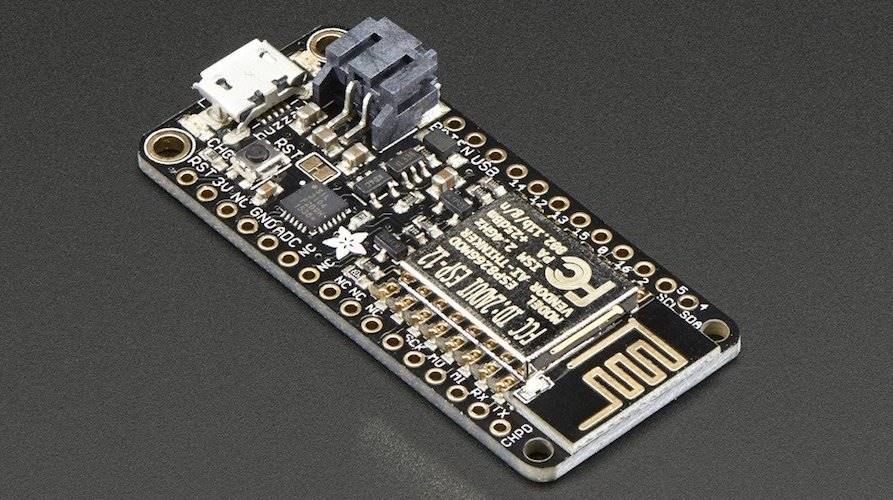

Feather is the new development board from Adafruit, and like its namesake it is thin, light, and lets you fly! We designed Feather to be a new standard for portable microcontroller cores.
Features


Built-in battery charging
Connector for 3.7V Lithium polymer batteries and built-in battery charging. You don’t need a battery, it will run just fine straight from the micro USB connector. But, if you do have a battery, you can take it on the go, then plug in the USB to recharge. The Feather will automatically switch over to USB power when it’s available.


SiLabs CP2104 USB-Serial chip
Wired up a high-quality SiLabs CP2104 USB-Serial chip that can upload code at a blistering 921600 baud for fast development time. It also has auto-reset so no noodling with pins and reset button pressings. The CP2104 has better driver support than the CH340 and can do very high speeds without stability issues.
Here’s some handy specs!
- Measures 2.0″ x 0.9″ x 0.28″ (51mm x 23mm x 8mm) without headers soldered in
- Light as a (large?) feather – 9.7 grams
- ESP8266 @ 80MHz with 3.3V logic/power
- 4MB of FLASH (32 MBit)
- Built in WiFi 802.11 b/g/n
- 3.3V regulator with 500mA peak current output
- CP2104 USB-Serial converter onboard with 921600 max baudrate for speedy uploading
- Auto-reset support for getting into bootload mode before firmware upload
- 9 x GPIO pins – can also be used as I2C and SPI
- 1 x analog inputs 1.0V max
- Built in 100mA LiPoly charger with charging status indicator LED, can also cut a trace to disable the charger
- Pin #0 red LED for general purpose blinking. Pin #2 blue LED for bootloading debug & general purpose blinking
- Power/enable pin
- 4 mounting holes
- Reset button
Datasheets, schematic, EagleCAD PCB files, and Fritzing available in the product tutorial
NodeMCU Dev Kit
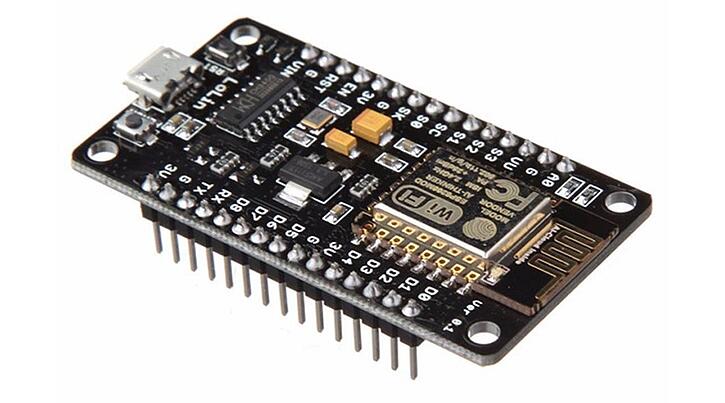

Features
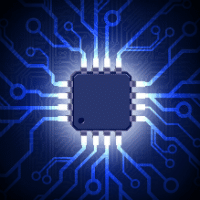

Arduino-like hardware IO
Advanced API for hardware IO, which can dramatically reduce the redundant work for configuring and manipulating hardware. Code like Arduino, but interactively in Lua script.


Nodejs style network API
Event-driven API for network applicaitons, which faciliates developers writing code running on a 5mm*5mm sized MCU in Nodejs style. Greatly speed up your IOT application developing process.


Lowest cost WI-FI
Less than $2 WI-FI MCU ESP8266 integrated and esay to prototyping development kit. We provide the best platform for IOT application development at the lowest cost.
Other Specs
- Operating Voltage: 2.5V to 3.6V
- On-board 3.3V 600mA regulator
- 80mA Operating Current
- 20 µA during Sleep Mode
- Tensilica Xtensa® 32-bit LX106
- 80 to 160 MHz Clock Freq.
- 128kB internal RAM
- 4MB external flash
- 802.11b/g/n Wi-Fi transceiver
- 1 ADC channels
- 2 UART interfaces
- 4 PWM outputs
- SPI, I2C & I2S interface
KNEWRON smartWIFI
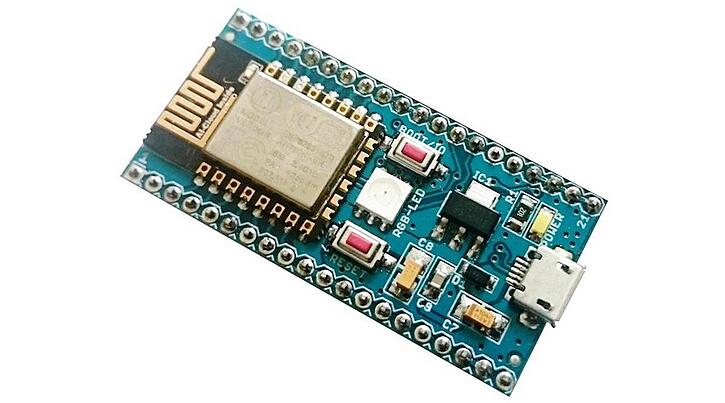

The KNEWRON SmartWIFI out of India is another inexpensive ESP8266 dev board with solid features and capabilities. For just $9, you get integrated Wi-Fi, a LiPo battery charger, user button, RGB LED and most notably – fairly straightforward setup. SmartWIFI provides a fairly simple experience with a good getting started guide and detailed documentation.
BENEFITS
- Inexpensive
- Simple setup with good instructions and documentation
SparkFun Thing
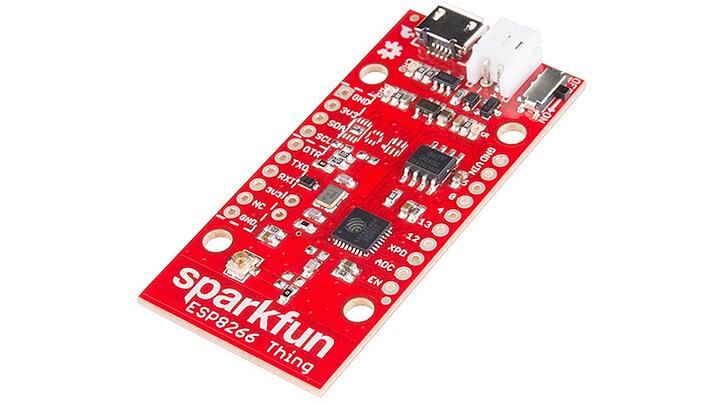

The SparkFun ESP8266 Thing is a breakout and development board for the ESP8266 WiFi SoC – a leading platform for Internet of Things (IoT) or WiFi-related projects. The Thing is low-cost and easy to use, and Arduino IDE integration can be achieved in just a few steps. We’ve made the ESP8266 easy to use by breaking out all of the module’s pins, adding a LiPo charger, power supply, and all of the other supporting circuitry it requires.
Specs
- All module pins broken out
- On-board LiPo charger/power supply
- 802.11 b/g/n
- Wi-Fi Direct (P2P), soft-AP
- Integrated TCP/IP protocol stack
- Integrated TR switch, balun, LNA, power amplifier and matching network
- Integrated PLLs, regulators, DCXO and power management units
- Integrated low power 32-bit CPU could be used as application processor
- +19.5dBm output power in 802.11b mode
WeMos D1 mini
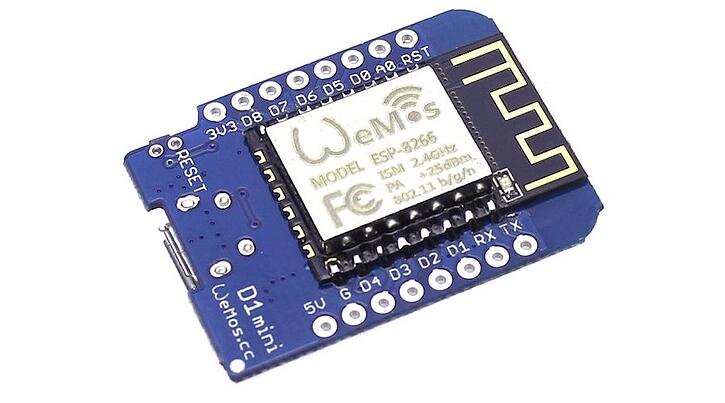

A mini wifi board with 4MB flash based on ESP-8266EX.
Features
- 11 digital IO, interrupt/pwm/I2C/one-wire supported(except D0)
- 1 analog input(3.2V max input)
- a Micro USB connection
- Compatible with MicroPython, Arduino, nodemcu
Tutorials
Documentation
Wio Link
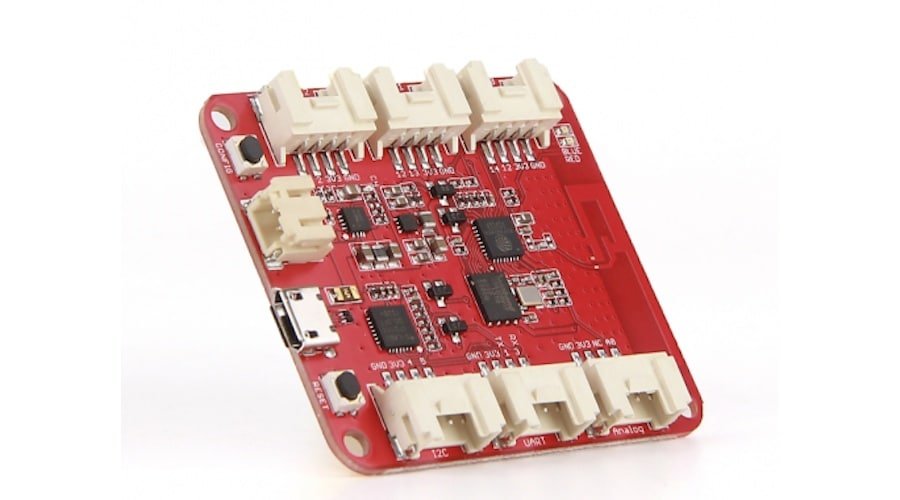

Wio Link is designed to simplify your IoT development. It is an ESP8266 based open-source Wi-Fi development board to create IoT applications by virtualizing plug-n-play modules to RESTful APIs with mobile APPs.


https://wiki.seeedstudio.com/Wio_Link/
Technical details
| Dimensions | 55mm x48mm x6.5mm |
| Weight | G.W 48g |
| Battery | Exclude |
| Wi-Fi Network Protocol | 802.11b/g/n |
| Wi-Fi Encryption Technologies | WEP/TKIP/AES |
| Flash Memory | 4MByte |
| Output DC Current | 1000mA MAX |
| Operating Voltage | 3.3V |
| Charge Current | 500mA MAX |
| Battery holder: | 3.4~4.2V |
| MICRO USB | 5V |

